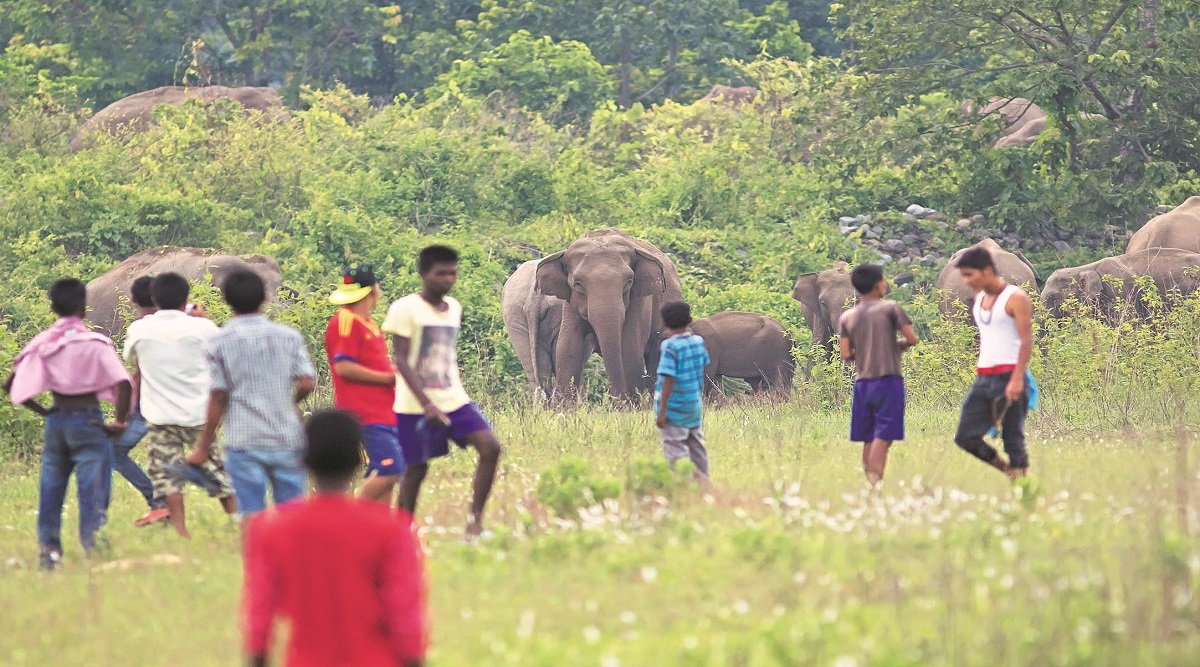Man vs nature: Elephants are especially susceptible to advances of civilisation, but there could be help at hand

By the banks of the Deepor Beel/ As the train chugs along/ The elephant herd comes down the forest hill/ The train hits the elephants / Which way is the world heading/ What’s progress/ Which way is mankind heading/ What’s progress…
These lyrics, dedicated to elephants who come to Deepor Beel, depict the helplessness of Assamese music composer Ibson Lal Baruah, who has composed a song called Deepor Beelor Paare Paare—The Musical Protest, to raise awareness, and save the Beel, and the plight of elephants.
The story of Deepor Beel is not confined to this song. It is a permanent freshwater lake, one of the largest lakes of lower Assam, located in a former channel of the Brahmaputra River, that supports the livelihood of more than 1,200 families of indigenous villagers living in the vicinity, as it is a major source of freshwater fish in addition to its rich flora and fauna. The residents and activists in the area continue to protest and fight against the railway and the forest department of the government of Assam against the making of a broad-gauge railway line along the southern periphery of the lake, which might pose a grave danger to crossing of elephants in this corridor.
The man versus nature conflict is nothing new, but these hold more importance today, as unregulated developmental activities like proliferation of human settlements, roads, and industries, brick kilns and soil cutting in the natural world become a cause of concern, threatening the very existence of the natural world and biodiversity.
Take the case of human-elephant conflicts in India. India is home to over 27,000 Asian elephants which is the world’s largest population of this rare species. Elephants across Asia live in a variety of habitats and landscapes, which include agricultural encroachments, fragmented landscapes and patches of forest.
Studies on conflict between elephants and humans in Asia and in Africa have identified crop raiding as the main form of conflict. Over the years, this conflict is constantly rising and has taken a toll on human lives, property, as well as elephant populations. With human population growing, elephant habitats have been altered by development and it has given rise to human-elephant conflict (HEC) that has resulted in unfortunate and tragic outcomes for both people and elephants. There are ways of reducing or resolving such conflicts as these are vital for the viable conservation of species like elephants.
In fact, in India, around 500 people are killed annually in human-elephant conflicts, because most areas that form elephant habitat are close to or adjoining human settlement, and there is often conflict between animals migrating or foraging for food and local people.
The conflict is quite evident from the killing of elephants in tragic accidents on railway tracks becoming common every year, besides these species being killed by humans for reasons other than ivory and habitat degradation. On the other hand, crop raiding, injuries and deaths to humans are also caused by elephants.
In light of such alarming incidents, a field manual was recently launched to guide forest staffers in managing key elephant landscapes and deal with human-elephant conflict across Tamil Nadu, Kerala, Karnataka, Bengal, Assam and Uttarakhand. The manual was launched by the Ministry of Environment, Forests and Climate Change (MoEF&CC) along with the Wildlife Institute of India (WWI) and World Wide Fund for Nature (WWF India). It has details of best practices of minimising human-elephant conflict with the aim of providing forest officials and departments and other stakeholders with guidance towards interventions to help mitigate HEC, both in emergencies and when conflict poses a recurring challenge.
Ravi Singh, secretary-general and CEO, WWF India says, “The field manual specifies the conditions under which forest officials and their teams should consider various interventions and is a living document that will incorporate on-field experiences from time to time. This manual is a result of years of field experience and efforts that our teams have gained to help both affected communities and elephants.”
The manual is an important step intended to be a ready resource for those working to foster human-elephant harmony across the country. If implemented well, the manual promises to help save lives, protect property, and promote the well-being of both humans and elephants. The manual is a living document, revised and redeployed every two-three years based on the latest insights in conflict management.
BLURB: The conflict is quite evident from the killing of elephants in tragic accidents on railway tracks becoming common
every year
For all the latest Life Style News Click Here
For the latest news and updates, follow us on Google News.
